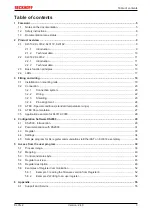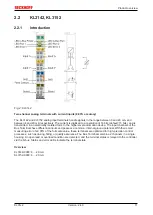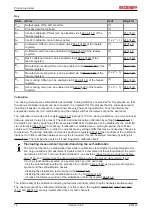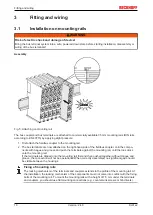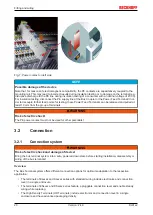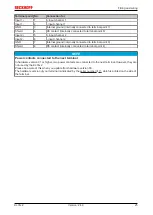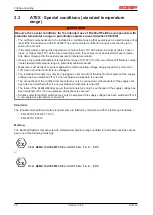
Product overview
KL31x2
15
Version: 2.4.0
• In the first phase of the calibration, an input voltage of 0 V is applied to both analog inputs (zero
calibration). The zero points of both analog input stages can be determined in this way. For this
measurement, the respective absolute value of the channels is of interest. The value is subsequently
stored in the RAM (register
).
• During the second calibration phase, an internal reference voltage of approx. 1.8 V (final calibration) is
applied to both analog inputs. In this case, it is no longer the absolute value of the measurement result
that is of interest, but only any deviation from the basic calibration value determined during production
(register
). The ratio between the two values is calculated and used in the next
. The value is subsequently stored in the RAM (register
).
Stabilization of the calibration
During the calibration, a stabilization of the offset and gain values is carried out. The calibration values are
only accepted once a certain number (specified via register
) of measured values is inside a
certain tolerance range (specified via register
). This further increases the precision. This function
.
Limit values
The terminal offers the option of monitoring two limit values per channel. Limit value 1 can be specified via
register
, and limit value 2 via register
. They are activated via bits in the feature
registers
. The status of the current process data value is indicated to the
controller via the status byte
. Possible states are: Process data equal limit value (3), process
data less than limit value (2), process data greater than limit value (1).
Limiting the measuring range
The terminal indicates any violation of the measuring range to the higher-level controller via the status byte.
• If the current measured value is larger than 0xFFFF or 0x7FFF, bit
is set.
• Is the current measured value is less than 0 or 0x8000, bit
is set.
In both cases, the ERROR LED of the respective channel will be on. This function can be deactivated via bit
Differential measurement
With the KL3132, KL3162, KL3172, KL3182, the differential measurement can be deactivated in R32.6.
Then, for channels 1 and 2, the input is internally switched to GND at terminal point 3/7, which must then be
wired externally accordingly.



